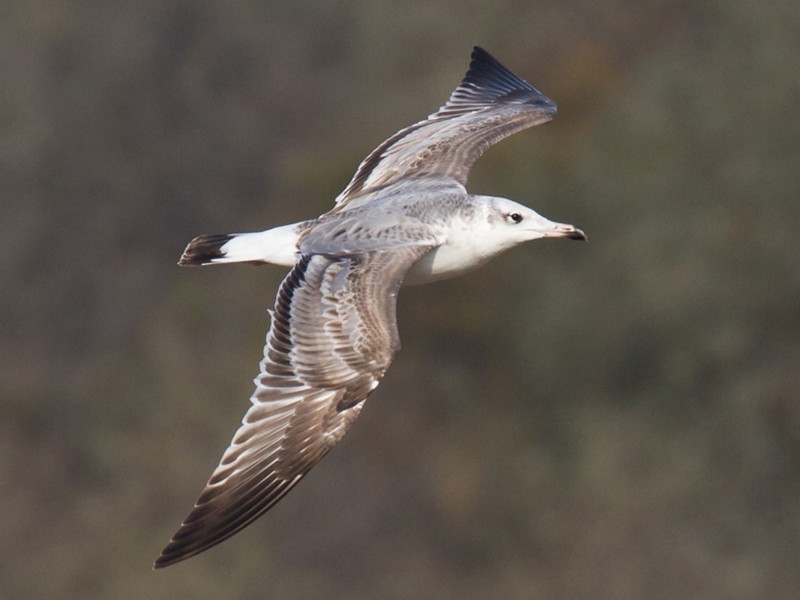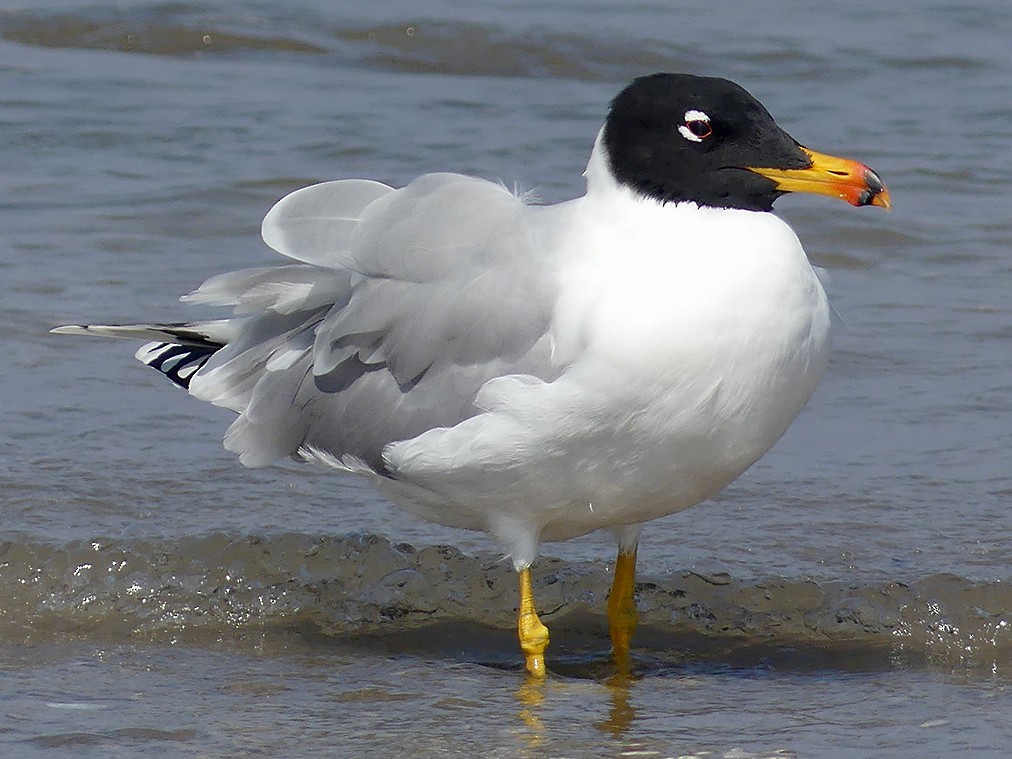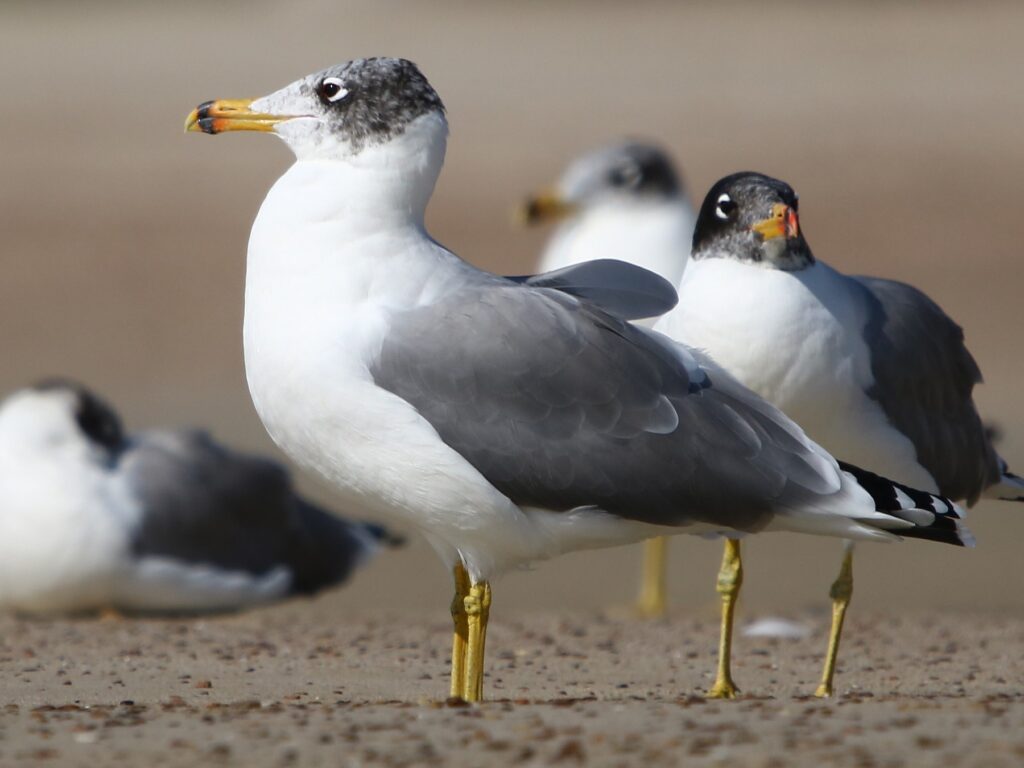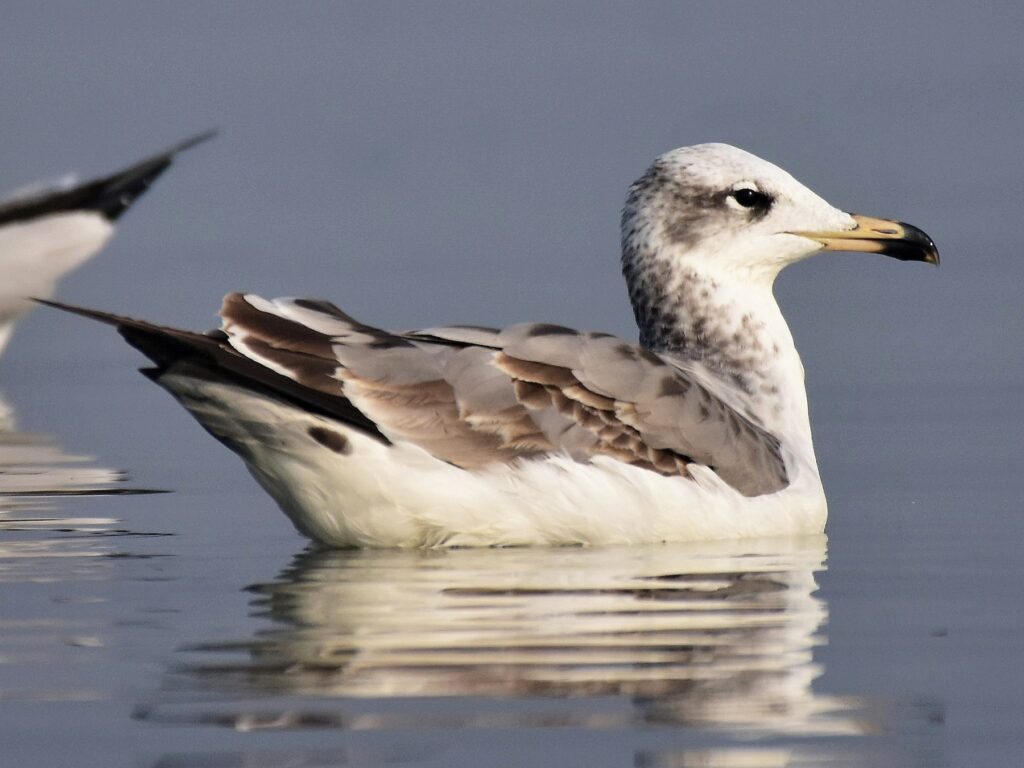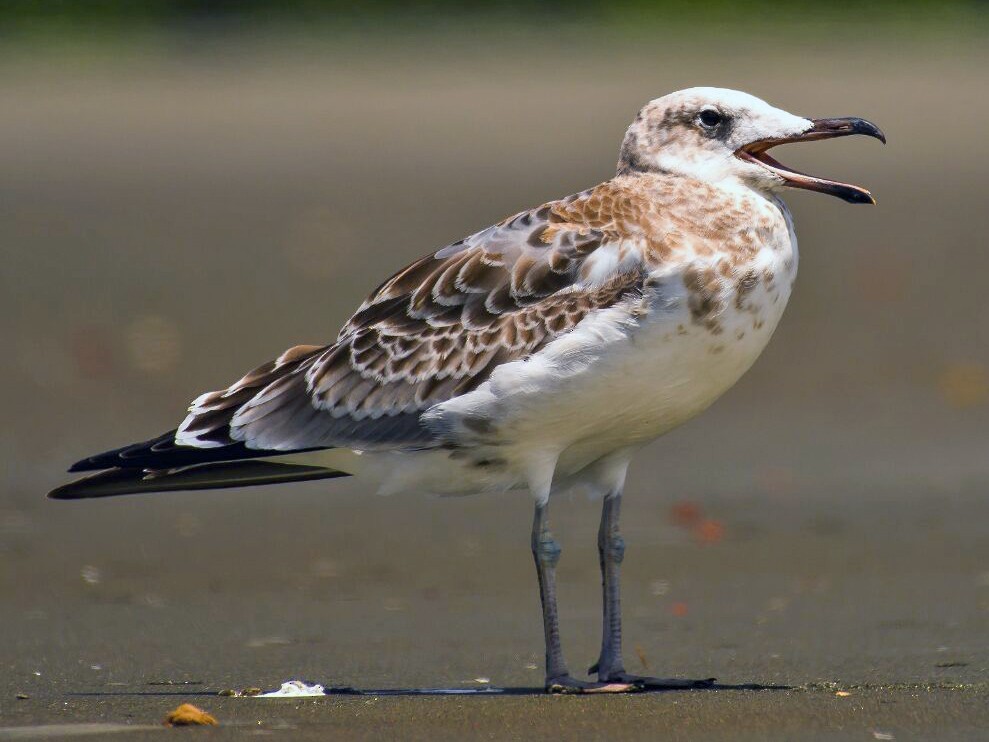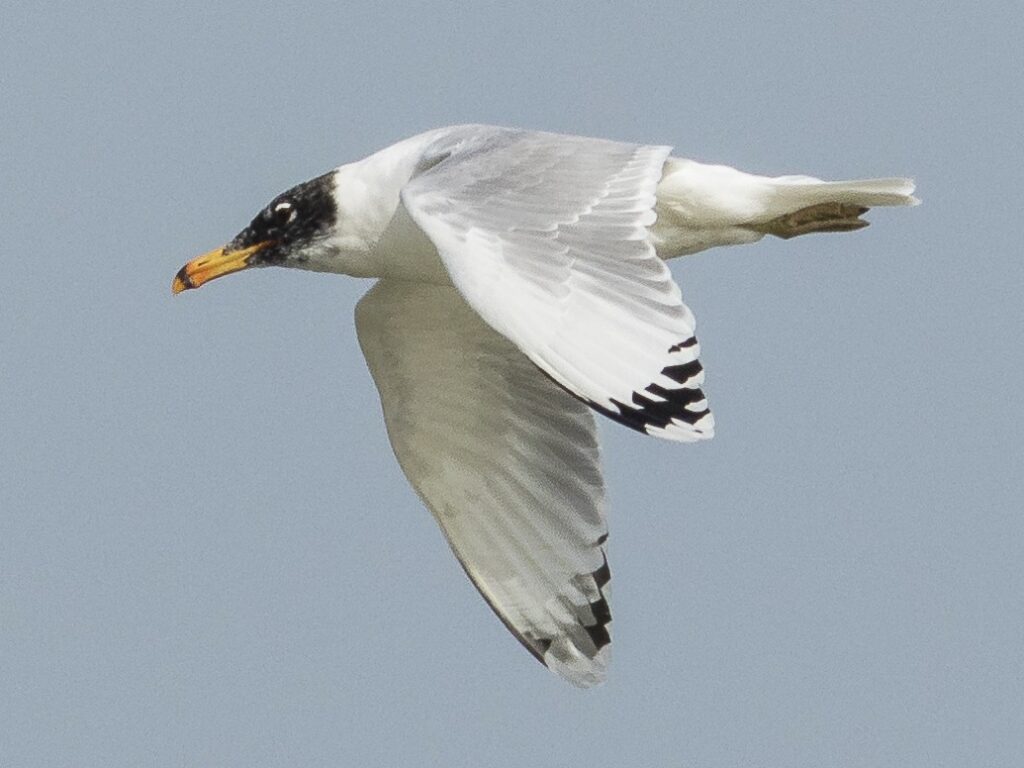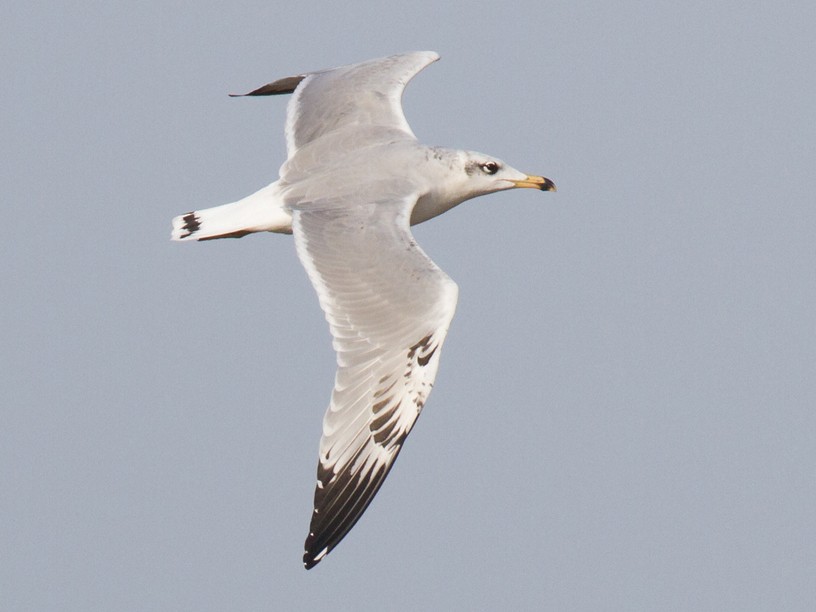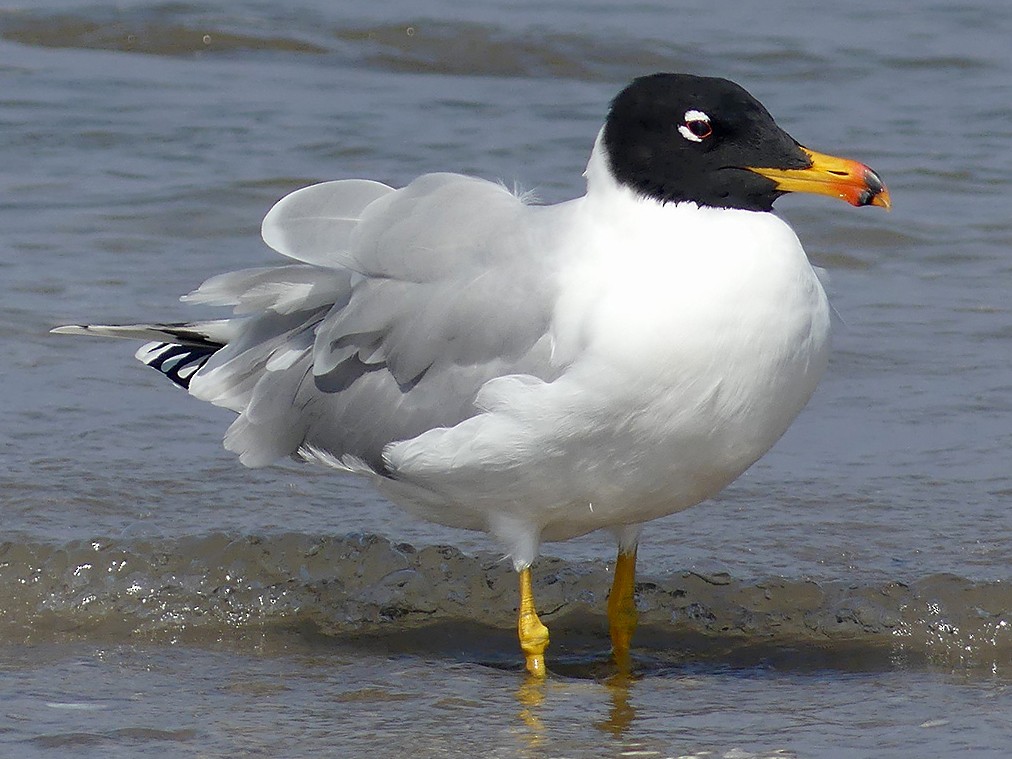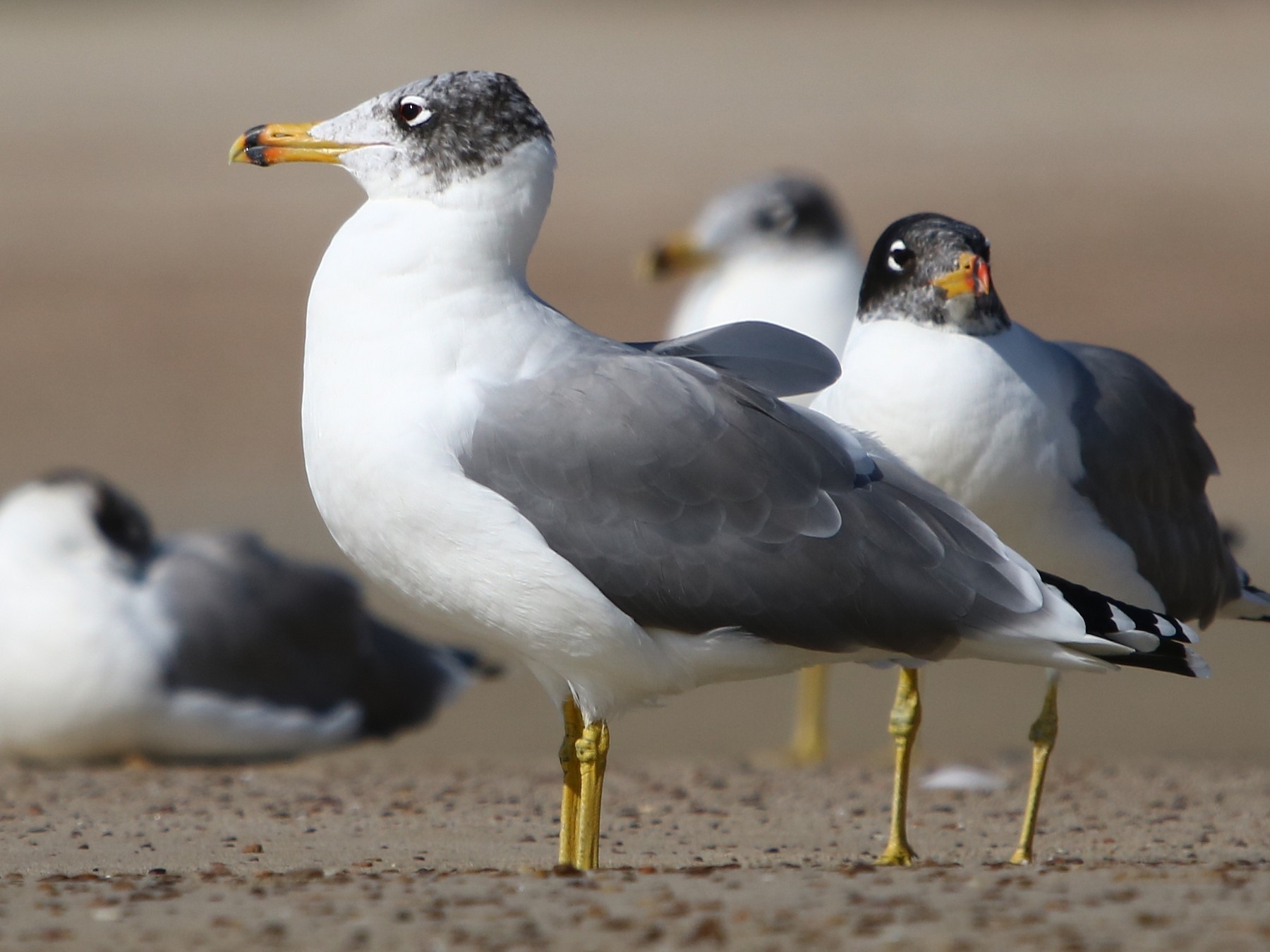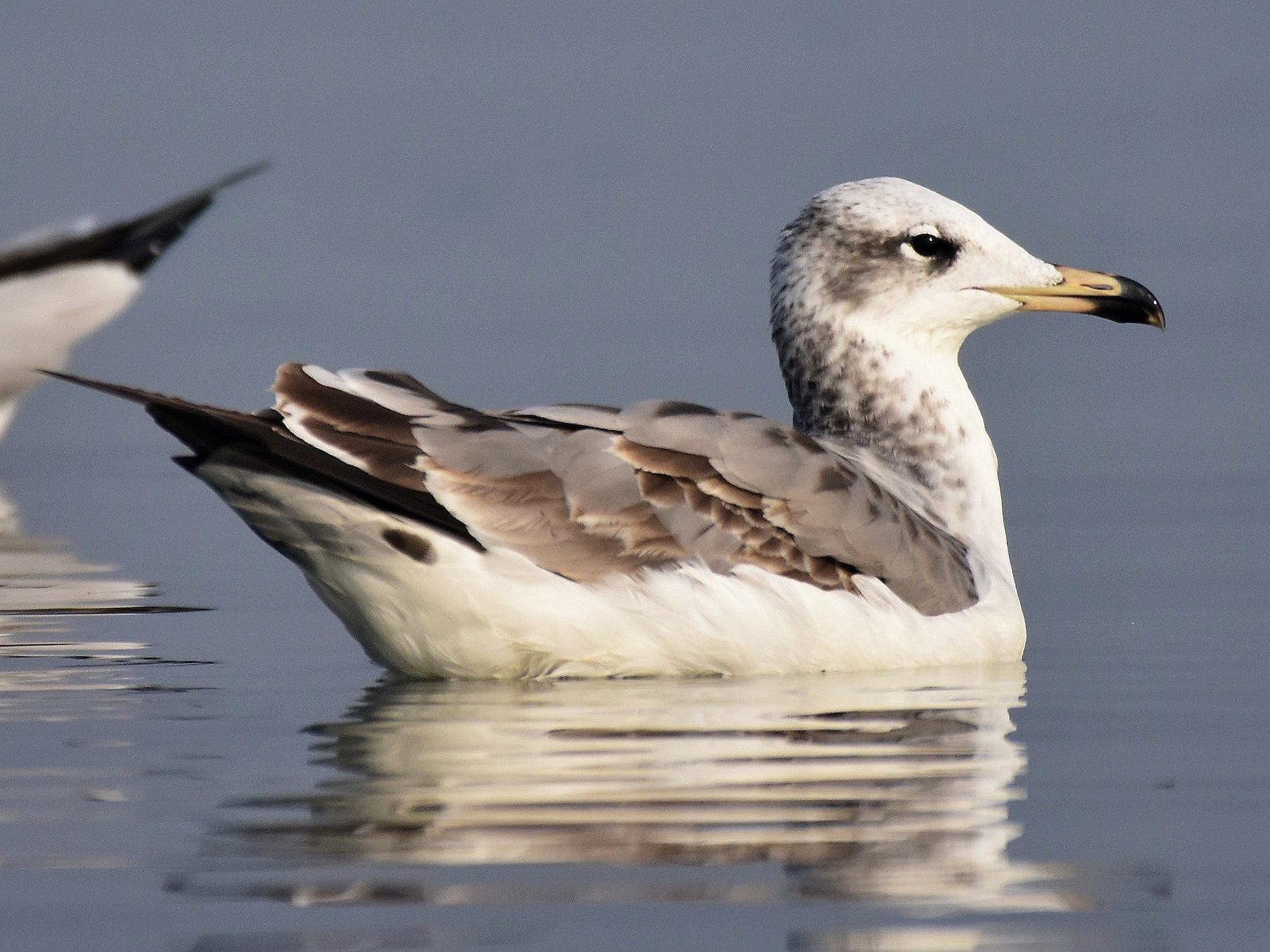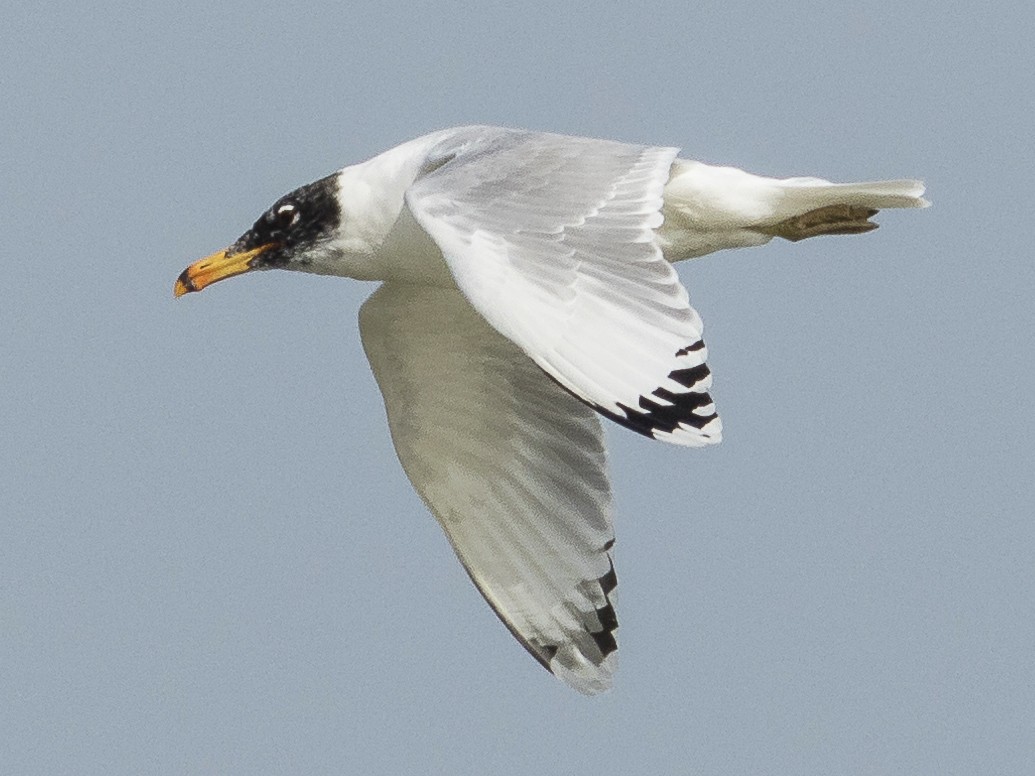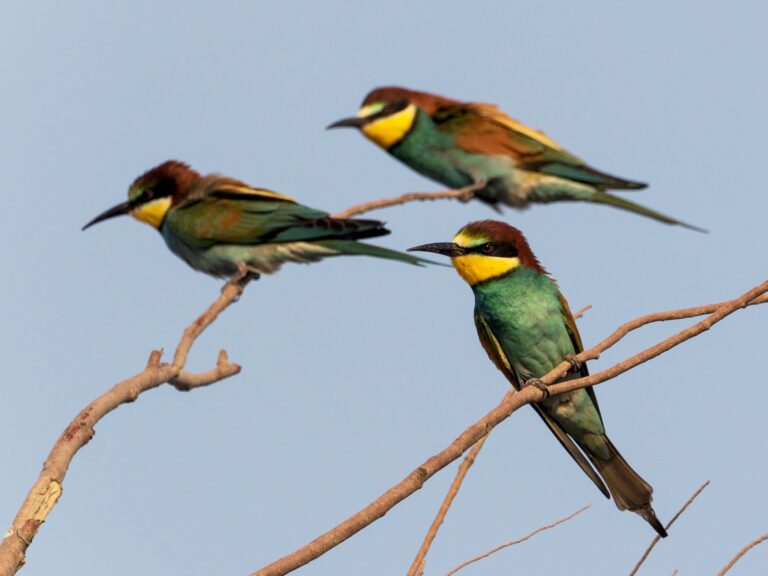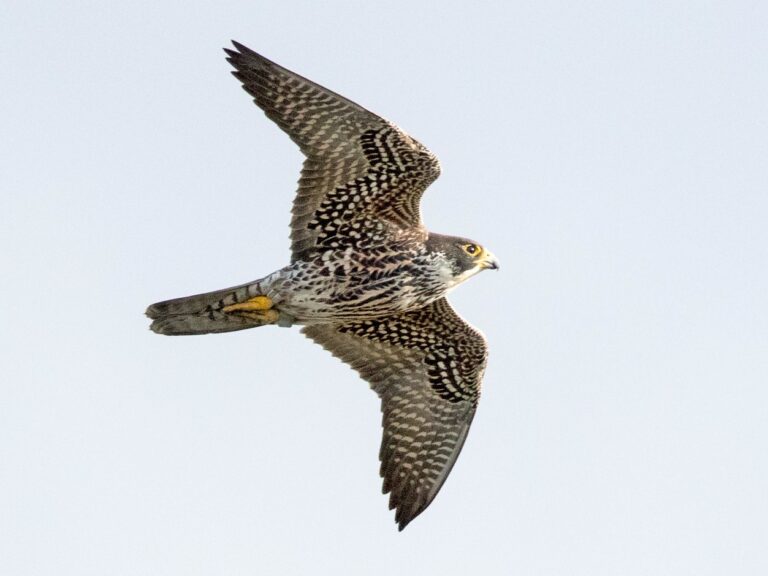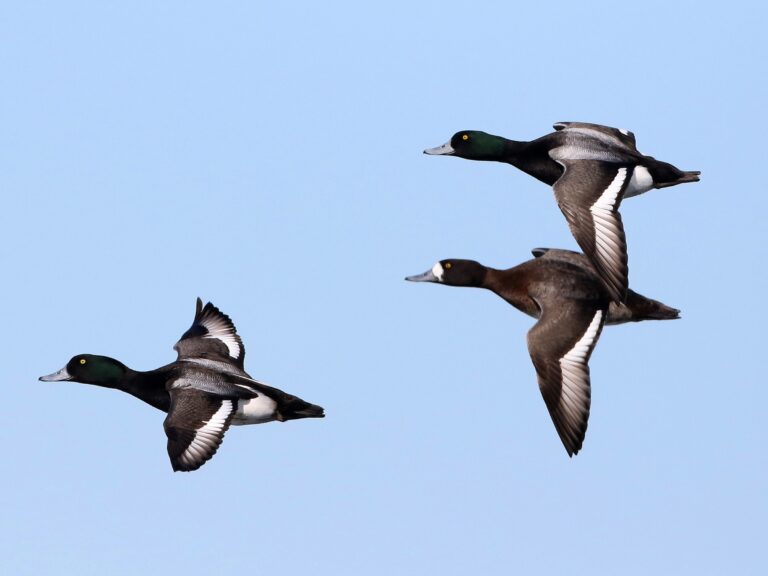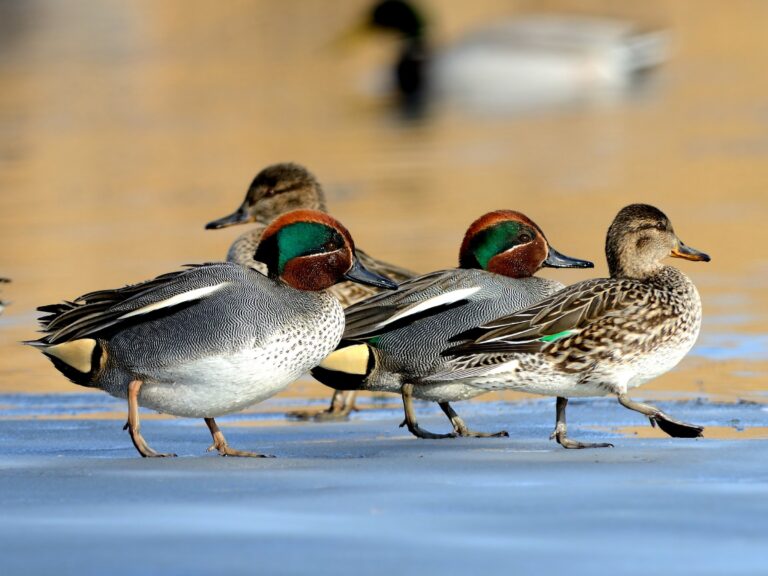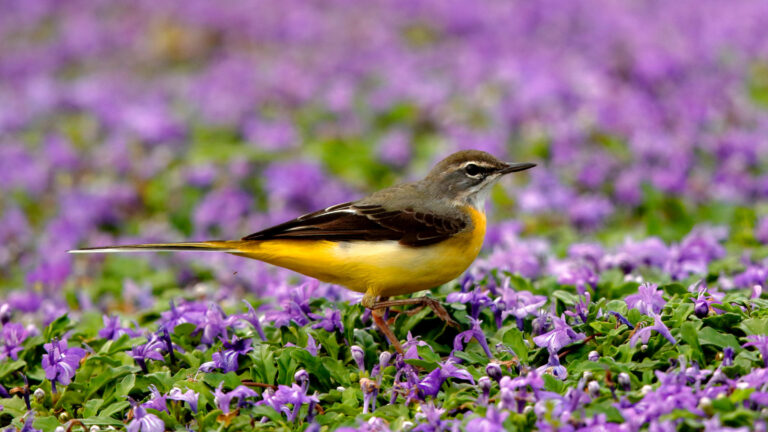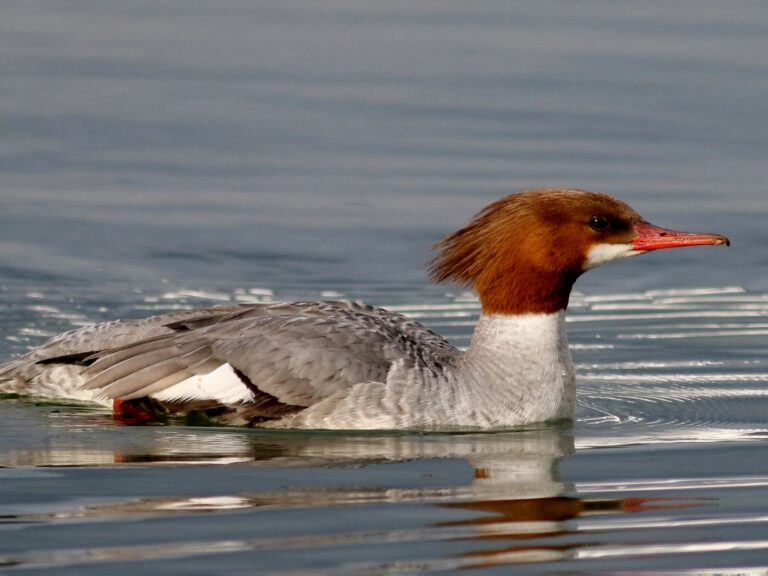Pallas’s Gull: The Majestic Seabird of the Eurasian Coastlines
Pallas’s Gull is a remarkable bird known for its striking appearance and unique behaviors. This species thrives in various habitats across the Palearctic, making it a fascinating subject for birdwatchers and researchers alike. With its bold black head and impressive wingspan, Pallas’s Gull is easily recognized in the skies. These birds are also known for their distinct vocalizations, which can vary based on their environment and interactions.
In terms of ecology, Pallas’s Gulls exhibit interesting feeding habits. They often hunt in groups and are known to consume a diverse diet, ranging from fish to crustaceans. Conservation efforts are important for this species, as its population is influenced by changes in habitat due to human activities. Understanding their status can help in developing strategies to protect these stunning gulls from potential threats.
Exploring the life and behaviors of Pallas’s Gull provides insights into how this species adapts to its surroundings and interacts with others. Their presence across different regions highlights the importance of preserving natural habitats for future generations of wildlife enthusiasts and researchers.
Key Takeaways
- Pallas’s Gull is recognized for its striking black-headed appearance and large wingspan.
- These gulls have diverse feeding habits and are known for their vocalizations.
- Conservation efforts are crucial for protecting Pallas’s Gulls in their natural habitats.
Taxonomy and Nomenclature
Pallas’s Gull is an important species in the study of bird taxonomy. Understanding its classification and name origins provides insight into its ecological role and identification.
Scientific Classification
Pallas’s Gull is scientifically classified under the family Laridae. Its current accepted name is Larus ichthyaetus, though it was previously known as Ichthyaetus ichthyaetus. The species belongs to a group known for their adaptability and wide distribution across the Eurasian region, particularly around the Caspian Sea.
The taxonomy of this gull has undergone changes over the years. Initially described by Peter Simon Pallas in 1771, it shares classifications with other large gulls. The genus name Ichthyaetus indicates its relationship to fish-eating habits, reflecting its ecological niche.
Name Origins
The name “Pallas’s Gull” honors the Russian naturalist Peter Simon Pallas, who contributed greatly to zoological studies. The specific epithet ichthyaetus combines the Greek words for fish (ichthys) and eagle (aetos), underscoring the species’ feeding behavior.
Pallas’s Gull is known for its distinct vocalizations, which include a series of harsh calls that are often used during breeding season. These sounds play a key role in communication and territory establishment among gulls. The vocal patterns can vary significantly, adding to the complexity of their social interactions. Through these names and classifications, the significance of this species in avian studies is evident.
Physical Description
Pallas’s Gull is a large bird with distinct features that set it apart from similar species. It exhibits unique plumage and size characteristics that are essential for identification. Understanding these aspects aids birdwatchers and ornithologists in recognizing this impressive gull.
Plumage and Size
Pallas’s Gull is a medium to large-sized gull, with adults reaching a wingspan of about 130-150 cm. They typically weigh between 1,000 to 1,500 grams. Their plumage varies throughout the seasons. In breeding plumage, adults have a striking gray back with a white head that features a dark peak. Their body is mostly white, contrasting with the darker tones of their wings.
In non-breeding season, the plumage changes significantly. The head becomes mottled gray and brown, making it less distinctive. Juveniles are also marked by browner tones overall, with more muted colors. This gradual change in plumage is important for identification during various times of the year.
Distinctive Features
Pallas’s Gull has several distinctive features that differentiate it from the Great Black-Headed Gull. Its bill is stout and larger, with a yellow base and a dark tip. This contrasts with the slimmer and less robust bill of the Great Black-Headed Gull.
Additionally, they possess long, slender wings, which allow for agile flying. Their vocalizations include a variety of harsh calls and squawks, particularly during the breeding season when they communicate with mates and young. This adds to their unique presence in their natural habitats, often near wetlands and coastlines.
Habitat and Distribution
Pallas’s Gull has a unique range and preferred habitats that contribute to its survival. This bird is particularly adept at utilizing various environments during different seasons, making its study important for ecological understanding.
Geographical Range
Pallas’s Gull (Ichthyaetus ichthyaetus) primarily inhabits the Palearctic region. Its breeding range extends from Eastern Europe to Central Asia, particularly around the Caspian and Aral Seas. During the non-breeding season, they migrate to areas along the coasts of South Asia, including parts of India and Bangladesh.
The current distribution is influenced by factors such as food availability and habitat quality. It is often found in regions with large bodies of water, which serve as feeding grounds. This adaptability in both distribution and migration patterns reflects its ability to thrive in varying environments.
Preferred Habitats
Pallas’s Gull prefers habitats near large water bodies, such as lakes, rivers, and coastal areas. They are often found around wetlands and estuaries, where they can forage more effectively.
Their diet mainly consists of fish and aquatic invertebrates, thus proximity to these food sources is crucial. Additionally, they thrive in areas with minimal human disturbance, allowing for safer nesting and raising of their young.
In terms of vocalizations, Pallas’s Gull produces a variety of calls used for communication during mating and territorial displays. These calls can vary in tone and intensity, depending on the social context. Understanding their vocal behavior is key to studying their social structure and breeding habits.
Behavior and Ecology
The behavior and ecology of Pallas’s Gull highlight its adaptations to the environment, feeding strategies, and reproductive practices. This species displays unique patterns in feeding, breeding, and migration, which are essential for survival.
Feeding Habits
Pallas’s Gull primarily feeds on a varied diet, including fish, crustaceans, and small invertebrates. They are known to hunt actively, often diving into water to catch prey. This gull also scavenges, taking advantage of food left by humans or other animals.
Vocalizations are an important aspect of their feeding behavior. They make a variety of calls to communicate with each other, especially when foraging in groups. These calls can signal the presence of food or alert others to dangers.
Reproduction and Lifecycles
Pallas’s Gulls are monogamous and usually mate for life. They typically nest in colonies on coastal islands or lakes, where they build nests from grass and other vegetation. The female lays 2 to 4 eggs, which both parents incubate for about 28 days.
The chicks are precocial, meaning they are relatively mature and mobile shortly after hatching. Parental care continues for several weeks, as both parents feed and protect their young. This care is crucial for the survival of the chicks during their early life stage.
Migration Patterns
Pallas’s Gulls are migratory birds that travel between breeding and wintering grounds. They migrate from their breeding areas in northern Asia to warmer locations in southern Asia and the Middle East. This journey often spans thousands of miles.
During migration, Pallas’s Gulls can be seen flying in loose flocks. They rely on favorable weather conditions to help with their travels. Understanding these migration patterns is important for conservation efforts and helps shed light on the ecological roles these gulls play.
Overall, the behaviors and ecological practices of Pallas’s Gull illustrate its adaptability and resilience in various environments. The study of this species aids in understanding broader ecological concepts and the role of birds in nature.
Conservation Status
Pallas’s Gull faces several challenges that impact its population and distribution. Understanding these threats and the efforts made to protect this species is crucial for its conservation.
Threats and Challenges
Pallas’s Gull encounters various threats, including habitat loss, pollution, and climate change. These birds primarily inhabit coastal areas and wetlands, which are increasingly being converted for agriculture and urban development. This reduction in suitable habitat can lead to decreased breeding success.
Additionally, pollution from plastics and chemicals affects their food sources and health. Climate change poses a further challenge by altering migration patterns and nesting sites. Vulnerable populations are also impacted by hunting and disturbances at breeding sites. In some regions, their vocalizations, which consist of a series of harsh calls, may not be enough to warn of impending threats.
Protection Efforts
Efforts to protect Pallas’s Gull include habitat conservation and management programs. Various organizations work on restoring wetlands and coastal areas to support their breeding and feeding needs. Conservationists also monitor populations through surveys and studies to assess the health and status of these gulls.
In certain regions, legal protections are in place to prevent hunting and habitat destruction. Local awareness campaigns help educate communities about the importance of preserving Pallas’s Gull and its environment. Additionally, protected areas have been established to safeguard critical breeding habitats. These combined efforts aim to ensure the survival of this unique species.
Interaction With Humans
Pallas’s Gull often interacts with humans in various ways, including opportunities for observation and the impact of human activities on their populations. Understanding these interactions helps highlight the relationship between birds and people.
Observation Opportunities
Pallas’s Gull can be observed in several urban and coastal locations. Birdwatchers often seek out these gulls for their distinct features and behaviors. They can be spotted during migration periods, especially in places like the Caspian Sea and parts of northern Europe and Asia. Observers note their striking plumage, especially the dark heads of adults during breeding season.
These gulls are also known for their vocalizations. They produce a range of sounds, from harsh calls to softer whistles. Watching these birds while they engage in social interactions adds to the experience. They often congregate in groups, making their behavior even more interesting to observe.
Human Impact
Human activities significantly affect Pallas’s Gull populations. Urbanization and pollution have changed their habitats, making them adapt to new environments. This adaptation may lead to increased contact with people as the gulls search for food.
In some cases, Pallas’s Gulls have learned to scavenge near human settlements, benefiting from discarded food. Unfortunately, this behavior can lead to conflicts, such as aggressive interactions when they feel threatened or when competing for resources. Understanding these dynamics is crucial for coexisting with these birds in urban settings.
Frequently Asked Questions
Pallas’s Gull has unique traits that make it a fascinating species to study. Understanding the differences between it and other gulls, its habitat preferences, vocalizations, and threats helps in appreciating this bird’s ecology.
How do you differentiate Pallas’s Gull from similar species?
Pallas’s Gull can be identified by its distinctive features. It has a large size with a long wingspan and a unique head pattern. Unlike the Western Gull, Pallas’s Gull has a darker mantle and lighter head, which can help in identification. Careful observation of these traits is essential for accurate differentiation.
What are the characteristics of Pallas’s Gull habitat?
Pallas’s Gull typically inhabits coastal areas, where food is plentiful. It prefers regions with wetlands, estuaries, and mudflats that support its diverse diet. These habitats also provide safe nesting sites, preferably near large bodies of water.
What does the Pallas’s Gull’s call sound like?
The call of Pallas’s Gull is quite distinctive. It is characterized by a series of harsh, raucous notes. This vocalization is often used to communicate with other gulls, especially during breeding season or when foraging.
Where can Pallas’s Gulls be commonly spotted?
Pallas’s Gulls are commonly found in parts of Europe, Asia, and North America. They can often be seen near coastal regions during migration. Observing them in their natural habitat offers great opportunities for birdwatchers and researchers alike.
What are the main threats to Pallas’s Gull populations?
Pallas’s Gulls face several threats that impact their populations. Habitat loss due to urban development and pollution is significant. Additionally, climate change and changes in food supply can affect their survival rates.
What feeding habits are unique to Pallas’s Gull?
Pallas’s Gull exhibits unique feeding habits. It is an opportunistic feeder that consumes a mix of marine and terrestrial foods. Fish, crustaceans, and even fruits are part of its diet, showcasing its adaptability in various environments.
